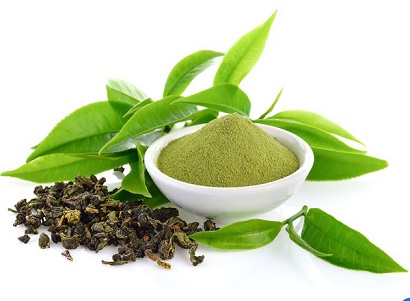Nikhil Prasad Fact checked by:Thailand Medical News Team May 31, 2024 1 year, 6 months, 2 weeks, 1 day, 6 hours, 25 minutes ago
Health News: The prevalence of obesity has been steadily rising, turning it into a global health concern. Obesity not only affects physical appearance but is also a significant risk factor for various chronic diseases such as diabetes, cardiovascular diseases, and certain types of cancer. As researchers explore potential treatments, Epigallocatechin gallate (EGCG), a major component of tea polyphenols, has emerged as a promising candidate. This
Health News report delves into the mechanisms by which EGCG can help combat obesity, focusing on its effects on adipogenesis and the browning of white adipocytes by inhibiting Notch1 expression, based on a study by researchers from Yunnan Agricultural University, Kunming-China.
 Epigallocatechin Gallate (EGCG) - A Potential Weapon Against Obesity
The Rising Tide of Obesity
Epigallocatechin Gallate (EGCG) - A Potential Weapon Against Obesity
The Rising Tide of Obesity
Obesity affects over 600 million individuals worldwide, contributing to an increased risk of metabolic disorders like diabetes, hyperuricemia, and cardiovascular diseases. The primary drivers of obesity are excessive caloric intake and insufficient physical activity, leading to the excessive accumulation of lipids in the body. Recent research has highlighted the importance of brown adipocytes and the browning of white adipocytes in combating obesity. This process involves the conversion of energy-storing white fat into energy-burning brown fat, which can significantly aid in reducing fat accumulation.
EGCG: A Multifaceted Polyphenol
EGCG is the most abundant polyphenol in green tea, known for its diverse health benefits, including anti-tumor, anti-diabetes, anti-inflammatory, and anti-obesity effects. Studies have demonstrated that EGCG can treat obesity through various molecular pathways. For instance, EGCG has been shown to activate AMP-activated protein kinase (AMPK), regulate bile acid signaling pathways, and enhance brown adipose tissue (BAT) thermogenesis. These multifaceted actions make EGCG a potent natural compound with the potential to address obesity through multiple mechanisms.
Notch1: A Target in Obesity Treatment
Notch1, an inflammatory marker protein, plays a crucial role in obesity development. Activation of Notch1 signaling promotes adipocyte proliferation, while inhibiting Notch1 expression can enhance brown fat thermogenesis and promote the browning of white fat, thereby ameliorating obesity. Despite previous studies showing that EGCG can improve inflammation by inhibiting Notch1, its effects on adipose tissue metabolism and obesity improvement through Notch1 inhibition remain underexplored.
Methods: Unraveling EGCG's Mechanisms
To investigate the potential of EGCG in treating obesity, researchers employed molecular docking and molecular dynamics simulations. These computational techniques simulated the interaction between EGCG and Notch1 at the atomic level, revealing that EGCG binds to Notch1 through hydrogen bonding. The stability of this interaction was confirmed through molecular dynamics simulations.
In Vitr
o Experiments: EGCG and Adipocytes
The next phase involved in vitro experiments using 3T3-L1 adipocytes, a widely used model for studying adipogenesis. EGCG treatment significantly reduced the sizes of lipid droplets in these cells and inhibited the expression of key proteins involved in fatty acid synthesis, such as PPARγ and PPARα. These results suggested that EGCG inhibits lipid synthesis during adipocyte differentiation.
Promoting Mitochondrial Biogenesis and Browning
One of the hallmarks of brown fat and browning white fat is the expression of uncoupling protein 1 (UCP-1), which is crucial for mitochondrial biogenesis and energy expenditure. The study found that EGCG treatment increased UCP-1 expression and promoted mitochondrial biogenesis in 3T3-L1 cells by inhibiting Notch1 expression. This was confirmed through UCP-1 immunofluorescence and mitochondrial staining, showing enhanced mitochondrial genesis in EGCG-treated cells.
The Broader Implications of EGCG
With the increasing prevalence of obesity and its associated complications, finding effective treatments is of paramount importance. Current strategies primarily focus on lifestyle modifications and dietary interventions, with pharmacological treatments reserved for severe cases. However, the concept of food as medicine has gained traction, with many studies highlighting the potential of natural compounds in combating obesity. For instance, puerarin from Pueraria and Moringa oleifera have shown promise in preventing obesity by regulating intestinal flora.
Green tea, a popular beverage worldwide, contains several bioactive compounds, including EGCG, which have been extensively studied for their health benefits. EGCG, in particular, stands out due to its abundance and effectiveness in improving metabolic conditions. This study's findings add to the growing body of evidence supporting EGCG's role in combating obesity.
Future Directions
Further research is needed to fully understand the mechanisms by which EGCG exerts its anti-obesity effects. Additionally, clinical trials are necessary to validate these findings in humans and to explore the optimal dosages and formulations for maximum efficacy. The potential synergistic effects of EGCG with other polyphenols and natural compounds should also be investigated to develop comprehensive dietary strategies for obesity prevention and treatment.
Conclusion
This study underscores the potential of EGCG in treating obesity through its inhibitory effects on Notch1 expression, promoting the browning of white adipocytes, and enhancing mitochondrial biogenesis. These findings open up new avenues for using EGCG as a natural, multi-targeted approach to obesity treatment. As research progresses, EGCG could become a cornerstone in the fight against obesity, offering a natural and effective solution to this pervasive health issue.
In conclusion, EGCG holds great promise as a natural compound with significant potential to treat obesity and improve overall metabolic health. Its ability to target multiple pathways and mechanisms makes it a versatile and potent tool in the ongoing battle against obesity.
The study findings were published in the peer reviewed journal: Molecules.
https://www.mdpi.com/1420-3049/29/11/2555
For the latest
Health News, keep on logging to Thailand Medical News.
Read Also:
https://www.thailandmedical.news/news/phytochemicals-from-the-herb-perilla-frutescens-exhibits-anti-obesity-potential
https://www.thailandmedical.news/news/herbs-and-phytochemicals-japanese-study-finds-that-polymethoxyflavones-from-citrus-sphaerocarpa-could-help-in-managing-obesity
https://www.thailandmedical.news/news/phenolic-phytochemicals-from-the-roselle-plant-or-hibiscus-sabdariffa-thai-krachiap-can-treat-and-prevent-obesity
